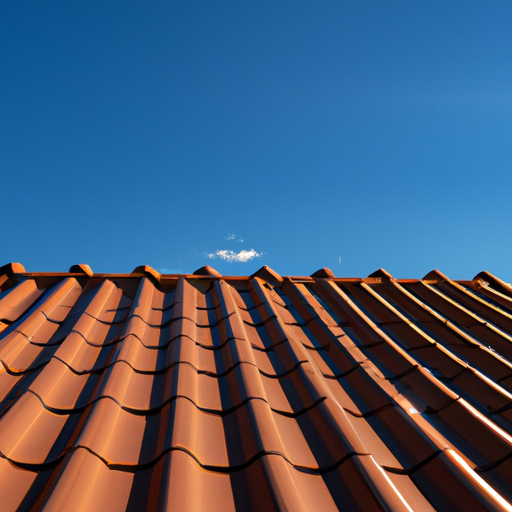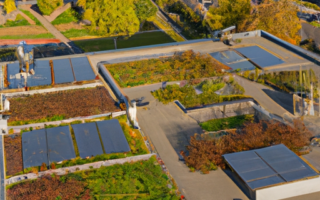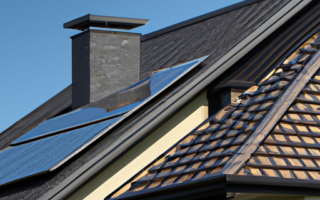Understanding the Basics of Roof Construction: A Step-by-Step Guide
Understanding the basics of roof construction is essential for anyone considering building or remodeling a home. A well-constructed roof is crucial for the protection and longevity of a building, as it serves as the first line of defense against the elements. In this step-by-step guide, we will walk you through the key aspects of roof construction, from the foundation to the finishing touches.
The first step in roof construction is to determine the pitch or slope of the roof. The pitch is the angle at which the roof rises and is crucial in determining the type of roofing materials to be used. It is typically expressed as a ratio of vertical rise to horizontal run. Common types of roof pitches include low-slope roofs (2:12), medium-slope roofs (4:12 to 6:12), and steep-slope roofs (greater than 8:12).
Once the pitch is determined, the next step is the installation of the roof trusses or rafters. These are the structural components that support the weight of the roof. Trusses are pre-fabricated triangular frames, while rafters are individual beams that run from the ridge to the eaves. The choice between trusses and rafters depends on the design of the roof and the preferences of the builder.
After the trusses or rafters are in place, the next step is to install the roof decking. This is the layer of material that serves as the base for the roof covering. The decking is typically made of plywood or oriented strand board (OSB) and provides structural support for the roof. It is important to ensure that the decking is properly secured and any gaps or joints are sealed to prevent leaks.
Once the decking is in place, the next step is to install the underlayment. The underlayment acts as a secondary weather barrier and helps to protect the roof from wind-driven rain and ice dams. It is typically made of felt or synthetic materials. The underlayment is applied in overlapping layers starting from the eaves and working up towards the ridge.
Finally, the last step in roof construction is the installation of the roof covering. There are numerous options available, including asphalt shingles, metal roofing, clay or concrete tiles, and wooden shakes. The choice of roof covering depends on factors such as climate, aesthetics, and budget. It is important to follow the manufacturer’s instructions and best practices when installing the roof covering to ensure its durability and performance.
Understanding the basics of roof construction is crucial for anyone involved in building or remodeling a home. By following these step-by-step guidelines, you can ensure that your roof is well-constructed and provides optimal protection for your property. Remember to consult with professionals, such as architects and contractors, for expert advice and guidance throughout the process. With the proper knowledge and planning, you can achieve a durable, functional, and aesthetically pleasing roof for your home.
Common Roofing Materials and Techniques: An In-Depth Overview
When it comes to roof construction, selecting the right materials and techniques is crucial for ensuring a durable and long-lasting roofing system. There are numerous options available in the market, each with its own set of advantages and disadvantages. In this comprehensive guide, we will delve into the common roofing materials and techniques, providing an in-depth overview to help you make an informed decision for your roofing project.
1. Asphalt Shingles
Asphalt shingles are the most popular roofing material due to their affordability, ease of installation, and versatility. They are made from a combination of asphalt and fiberglass, providing excellent protection against the elements. With a lifespan of around 20 to 30 years, asphalt shingles are available in a wide variety of colors and styles, making them suitable for different architectural designs.
2. Metal Roofing
Metal roofing has gained significant popularity in recent years due to its durability and energy efficiency. Commonly made from steel, aluminum, or copper, metal roofs are known for their longevity, with a lifespan of 40 to 70 years. They are resistant to fire, rot, and insect damage, making them a reliable choice for homeowners. Metal roofs can be purchased in various styles, including standing seam, corrugated, and metal tiles, providing a modern and sleek aesthetic.
3. Clay and Concrete Tiles
Clay and concrete tiles have been used as roofing materials for centuries, known for their durability and aesthetic appeal. These tiles are highly resistant to fire, wind, and insect damage, and can last for 50 to 100 years or more with proper installation and maintenance. Clay tiles offer a classic and elegant look, while concrete tiles provide a range of design options, including flat, low-profile, and high-profile styles.
4. Slate
Slate roofs are renowned for their beauty and longevity, with some installations lasting over a century. This natural stone material is incredibly durable and resistant to fire, making it an ideal choice for homeowners seeking a premium roofing option. Slate is available in a range of colors and thicknesses, allowing for various design possibilities.
5. Green Roofs
Green roofs, also known as living roofs or eco-roofs, have increased in popularity as environmentally friendly options. These roofs feature a layer of vegetation and soil, which helps improve air quality, reduce energy consumption, and manage stormwater runoff. While green roofs require special design considerations and additional maintenance, they offer numerous benefits both for the environment and the building occupants.
When it comes to roofing techniques, there are various methods used for installation, including the traditional nail-down approach, as well as newer techniques such as adhesive, screw-down, and interlocking systems. Each technique has its own set of pros and cons, and the choice depends on factors such as the roofing material, climate, and budget considerations.
In conclusion, selecting the right roofing materials and techniques is essential for a successful roof construction project. Whether you opt for asphalt shingles, metal roofing, clay tiles, slate, or green roofs, make sure to thoroughly research the advantages and disadvantages of each material and technique. Consulting with a professional roofer can also provide valuable insights and help you make an informed decision that suits your needs and preferences.



